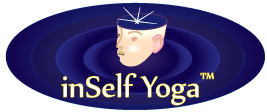योगश्चित्तवृत्तिनिरोधः ॥ २॥
Meditationtime Forum Post
Date: Posted 3 years before Jan 11, 2016
Alfredo 3 years ago
yogaścittavṛttinirodhaḥ
MB translation: The skill of yoga is demonstrated by the conscious non-operation of the vibrational modes of the mento-emotional energy.
Vivekananda: Yoga is the restraining of the mind-stuff (chitta) from taking various forms (vrittis).
Swami Jyotirmayananda: Yoga is the cessation of the thought-waves (modifications) of the mind stuff.
There is practically no difference between the translations of Vivekananda and Jyotirmayananda. You add 2 new dimensions: a) A stress on the conscious effort for the non-operation (akin to cessation and restraining); b) The proclamation that the chitta has a dual function: mental and emotional = mento-emotional. If this is correct, and I have no reasons to believe it is not, your translation is superior and comes from a deeper inside. It also provides a wider understanding.
Then in the one-page commentary, Page 82, you negate the practice of Brahma-Abhyasa as given to me by Swami Krishnananda (and Panchadasi) here: "The solution they say is to engage the mind in spiritual topics, never giving it the chance to dwell on ordinary subjects, which are apart from the transcendence." For that Brahma-Abhyasa instruction, as you once mentioned, without specific technical practices, does very little, and it amounts to a chimera.
Then finally, the addition of the "yoga of the astral plane", and at first a faith in the existence of the "psychic organ in the head of the subtle body", to become a realized recognition later as the Jnana-dipa, and the dimension that the Yoga Sutras hinges on this organ and its purification, and not necessarily on the physical aspect of it.
Brilliant!MiBeloved 3 years ago
That is a terrible assessment of the work of Swami Vivekananda, a person who could read a book by looking at the cover alone, and Swami Jyotirmayananda who did tremendous work for inculcating Sanatana Dharma.
It may be that with their blessings I translated in that way. My little advantage, which you made a big deal of, may be due to just being born in a condition where Hindi was not my native language. That forced me to really convert directly from experience to English, instead of using Hindi or an Indian dialect as a bridge between experience and translation to English.
Luckily you are the only person who would say this. Please keep it quiet!
Alfredo 3 years ago
But the translation never lends itself to the dual condition of the Chitta as mento-emotional, so this must come from somewhere, and that was my analysis. I never intended to diminish Vivekananda or Jyotirmayananda, but to stick to the facts.
MiBeloved 3 years ago
It may be that to the Indian psyche there is no clear cut demarcation as in the West as to emotion and rationality. In meditation even, it is some times hard to distinguish one from the other and it seems that there is an osmosis type of penetration of one to the other, and also a sort of currency conversion which they operate between each other.
For these reasons I wanted to bring that to fore so I coined the terms mento-emotional.
Looking at it from the perspective of the original Hatha Yoga as practiced by the Nath yogis, emotions are the territory and expression of kundalini and rationality is the province of the buddhi. But the two principles are conspirators which already took control of the psyche.
The causal body is a different subject entirely and it also has chitta energy and slight movements of vritti which are so abstract as to not exist at all. In the causal body the distinction between emotions and rationality is totally lost. The only thing one finds there is their pre-potential form.
And incidentally, that is the subject of this week's ribbon:

Alfredo 3 years ago
What is the difference between the Para-Prakriti and the Mula-Prakriti?
MiBeloved 3 years ago
Para-prakriti is the stage of total non-manifestation of material nature. In this location there is no perception of it but it is there nevertheless. This might be the same as what is speculated in science to be anti-matter. Some yogis reach here and say that everything comes from here or comes from nothingness, existential void.
Mula-prakriti is the subtlest manifested state of material nature. In this location there is perception but it is totally subjective. A yogi can go there and take a subjective photograph and then report back to us about it. This might be what science speculates to be dark matter. Yogis who go here report that it is a manifestation of super-compressed energy.
Some yogis, like my first yoga teacher, Authur Beverford, called this the Primal Creative Cause. He used to advise Sir Paul and myself to try to reach this place. His opinion was that even Krishna was sourced here but that is not confirmed in Gita, where Krishna said he is beyond this place.
Beverford, in private discussions with me about this, was real serious about the view that no person is beyond this place, that person came about from this Primal Creative Cause. Of course Gita contradicts this view outright, but that was his basic philosophy.
